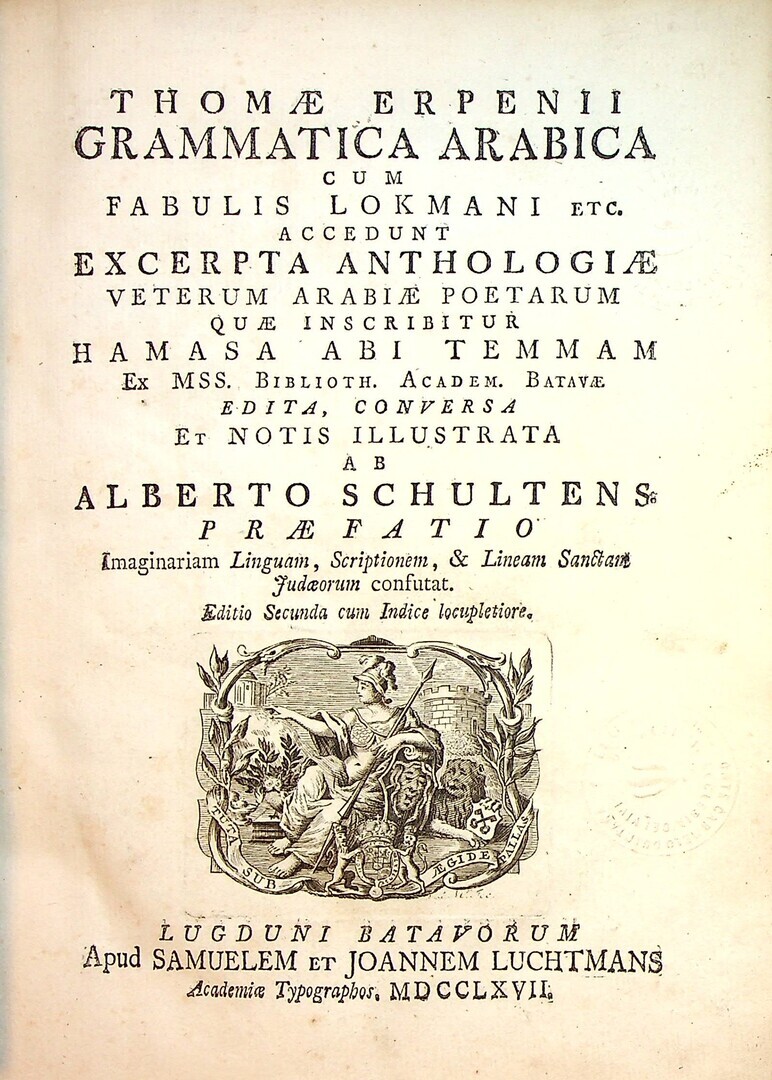Grammatica Arabica cum fabulis Lokmani etc. : Accedunt excerpta Anthologiae veterum Arabiae poetarum quae inscribitur Hamasa abi Temmam / ex MSS. Biblioth. Academ. Batavae edita, conversa et notis illustrata ab Alberto Schultens. Praefatio imaginariam linguam, scriptionem, & lineam sanctam Judaeorum confutat.
Erpenius, Thomas 1584-1624.
Synopsis
This work introduced generations of Europeans to the rudiments of Arabic grammar. Erpinius was the first to render the native Arabic grammarians intelligible. In his edition of the Ajrumiya he welded Arabic terminology onto the Latin language. He dedicated this work to the Lebanese scholars, Jibrai’l al-Sahyouni (Sionita) and Yuhanna al-Hasrouni (Hesronita), and his consilium or advisory notes to prospective students of Arabic, are repeated from the first edition of 1620. Surat al-taghabun is included as reading material with detailed grammatical notes.
Luqman’s reputation for sagacity unites his three separate identities as the legendary hero of the lost ‘Ad tribe of the Jahiliyya, the father who admonishes his son in a chapter of the Qur’an which bears his name, and the late medieval writer of the fables printed in this book- fables which have no trace of the most important animals known to the Arabs, such as the ostrich, the hyena, the jackal and the camel, and therefore must be a translation and adaptation of the Syriac version of Aesop’s fables originating in Christian circles in Mamluk Syria.
Bibliographic references: Brunett, II, 1050; Zenker I, 174; Fück 59 ff; Not in Schnurrer.








